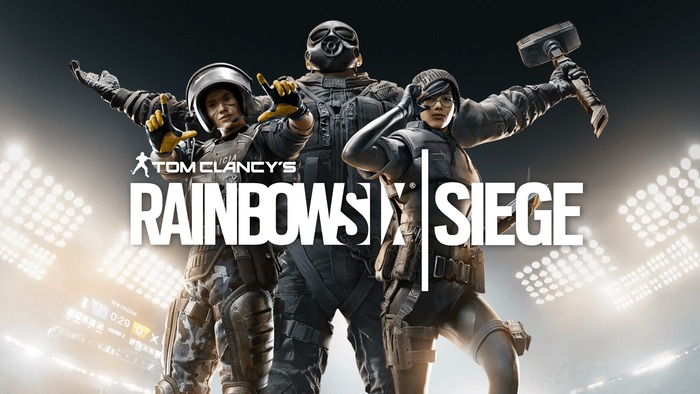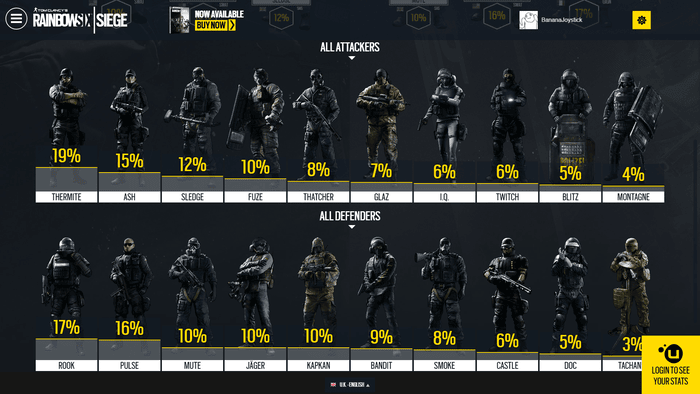R6 Stats Breakdown: Attack vs Defense Win Rates in 2025
The competitive landscape of Rainbow Six Siege has evolved dramatically over the years, with Ubisoft’s continuous balancing efforts attempting to create fair gameplay dynamics between attacking and defending teams.
As we analyze the first quarter of 2025, we’re seeing fascinating shifts in the traditional paradigms that have defined the game’s meta for years.

The collection of r6 stats across all competitive tiers reveals an interesting narrative about the current state of balance. While historically defense had maintained a slight edge in win rates (hovering around 52-55% in previous years), the latest patch notes and operator adjustments have significantly altered this dynamic.
The data now shows a remarkable convergence, with attack and defense win rates sitting at near-perfect equilibrium in ranked play—49.8% for attackers and 50.2% for defenders, with the remaining fraction accounting for rare draws.
At the professional level, however, the statistics tell a different story. Pro League matches in the first three months of 2025 have demonstrated a surprising attacker advantage, with offensive rounds being won approximately 53% of the time.
This represents a significant departure from previous seasons and suggests that at the highest level of play, the meta has shifted to favor coordinated attacking strategies.
The most notable changes appear to stem from the map reworks implemented in late 2024, which introduced more viable entry points and reduced the effectiveness of traditional anchor positions.
Looking at operator-specific data provides additional insights into this shifting balance. Attacking operators with flexible utility, particularly those who can efficiently counter defensive gadgets, are seeing unprecedented pick rates.
The introduction of Operator Nexus, a new attacker with the ability to temporarily disable electronic devices in a radius without destroying them, has been particularly disruptive to established defensive setups. With a 68% pick rate in Pro League and a winning delta of +3.2%, Nexus represents the spearhead of this attacking renaissance.

On the defensive side, adaptation has been the key to survival. Operators who can reposition quickly or provide value even after their gadgets are neutralized have risen to prominence.
Traditional anchor operators with static abilities have seen their effectiveness diminish, while roamers and operators with regenerating or replaceable utility maintain stronger win rates. This shift has encouraged more dynamic defensive playstyles, moving away from the rigid site setups that dominated previous metas.
Map-specific analysis reveals further nuances in the attack/defense dynamic. Newly reworked maps like Skyscraper 2.0 and Border Redux show the most balanced statistics, with attack/defense win rates falling within 2% of each other.
Older maps in the pool, however, continue to display more significant biases. Bank remains defender-sided at 54% defensive round wins, while Chalet has swung dramatically to favor attackers at 57% offensive victories. This suggests that Ubisoft’s design philosophy for map reworks has been increasingly successful at creating balanced competitive environments.
The ranked distribution data adds another layer to our understanding. In higher ranks (Diamond and above), defensive coordination remains slightly more effective, with defense win rates climbing to 51.8%. This indicates that at the peak of the skill curve—but below professional, organized play—defensive utility optimization and map control still provide a slight edge.
Conversely, in lower ranks (Silver and below), attackers are now winning more rounds (52.3%), potentially reflecting the increased attacking operator friendliness and the reduced necessity for complex coordination introduced in recent updates.
Weapon statistics have also played a crucial role in the current meta balance. The assault rifle category received subtle adjustments to recoil patterns and damage fall-off ranges, making these primary attacking weapons more reliable at varied engagement distances.
Meanwhile, the defender-exclusive SMGs have seen their close-range effectiveness slightly reduced, subtly contributing to the overall balance shift we’re observing.
Time utilization analysis provides one final perspective on the evolving meta. Pro teams are increasingly leveraging late-round executes, with successful attacks frequently occurring in the final 30 seconds of a round.
This trend demonstrates a maturation in attacking strategy, with teams using the majority of the round time to methodically clear defensive utility before executing coordinated pushes. The data shows that attacks beginning execution with less than 30 seconds remaining now succeed at a higher rate (62%) than early or mid-round pushes.
As Rainbow Six Siege approaches its tenth anniversary, the balancing act between attack and defense appears to be reaching an unprecedented state of equilibrium for average players while evolving in fascinating ways at the professional level.
The coming seasons will likely see continued adjustments as Ubisoft responds to these trends, potentially introducing new mechanics to either restore defensive advantages at the pro level or to further refine the balanced state found in ranked play.





